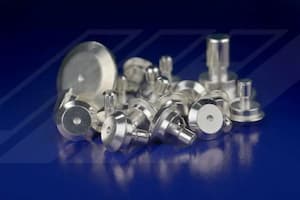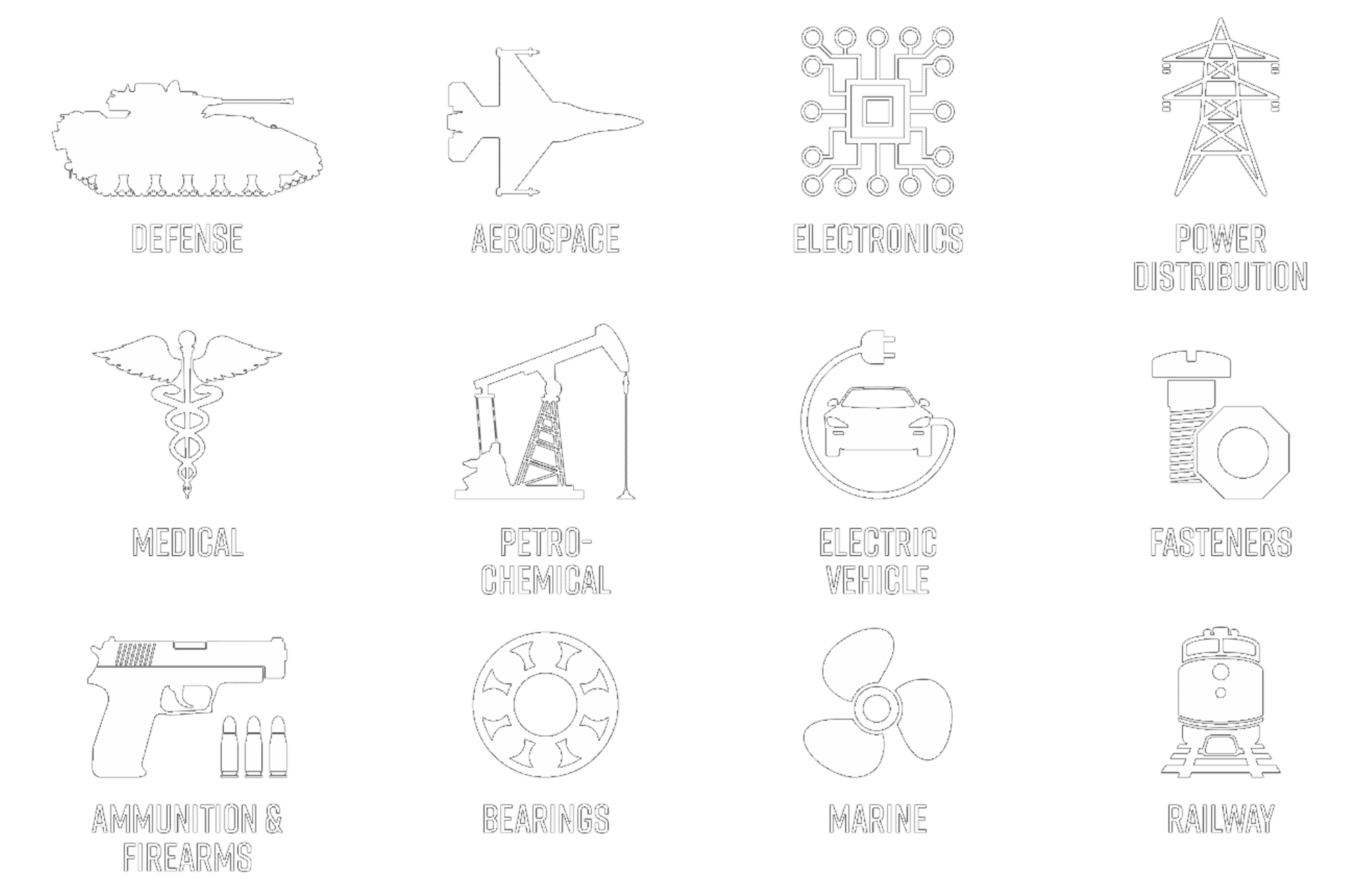
Revision: 2008
Finish: Silver
Company: ASTM
Application: Silver deposits are defined as follows: Type 1 (99.9% min purity), Type 2 (99.0% min purity), Type 3 (98%.0 min purity), Grade A (Mat), Grade B (Bright – brighteners), Grade C (Bright – mech/chem polishing), Grade D, (Semibright), Class N (no chromate treatment), Class S (chromate treatment)
Appearance: Varies per Grade
Plate Thickness: No mandatory thickness is provided however Appendix X3 provides reference thicknesses as follows: 0.0000393″ minimum for short-term shelf life solderability, 0.000098″ minimum for contact connectors having limited wear, 0.000197″ nominal thickness for thermo compression bonding and domestic hollowware, 0.00039″ medium-quality hollowware, short-life domestic cutlery and flatware, and suggested thickness for thermo compression bonding and die attachment for semiconductors, 0.00078″ normal hotel flatware and high-quality domestic flatware and hollowware, ≥0.00157″ Applications where very severe wear resistance is required, such as machine bearings and for high-quality flatware
Strike Thickness: per 6.3.3 – The final silver coating shall be preceded by a silver or gold strike for optimum adhesion. Per 6.3.4 – A nickel or nickel-alloy intermediate layer, at least 1um (39uin) thick, shall be applied before the silver electroplate when the product being plated is made from copper or copper alloy. Nickel underplatings are also applied for other reasons. Per 10.1.3 (Requirements that shall apply when the ultimate purchaser is the US Government or an agent of the US Government) – The silver electroplating shall be applied over an intermediate coating of nickel or nickel over copper on steel, zinc, and zinc base alloys. Copper and copper base alloys require intermediate coatings. Copper alloy basis metal articles on which a nickel undercoat is not used and other basis metal whereon a copper undercoat is employed shall not be used for continuous service in excess of 149 degrees C.
Notes:
Back to Spec Database
The information provided within the Advanced Plating Technologies’ database is for reference only and is not intended to be a comprehensive summary of any specification’s content. Rather the database was designed to provide a brief summary of the specification’s subject matter to provide a sound context of the specification’s contents and engineering purpose. Advanced Plating Technologies cannot guarantee that the specifications contained therein are the most current revisions. In addition, Advanced Plating has no affiliation with any of the organizations, agencies or companies contained within the database. We hope you find the APT specification database a useful online resource and value any feedback you may have. Although the data provided in this database has been obtained or adapted from sources that are believed by us to be reliable, no warranty expressed or implied is made by us regarding the accuracy, adequacy, completeness, reliability or usefulness of any data. The data is provided strictly for reference purposes. Only our standard product and service warranties apply to finished goods supplied by Advanced Plating Technologies. To the extent that any third party company or agency is identified as a data source, Advanced Plating Technologies is not associated with such company or agency and that such company or agency is not identified for purposes of advertising, endorsement or recommendation by APT. If you find any errors or omissions in the data, we encourage you to report them to us.







